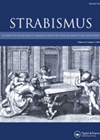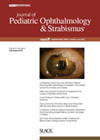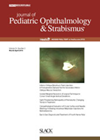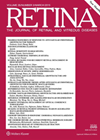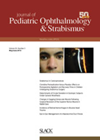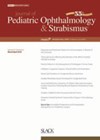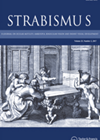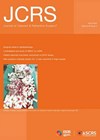You searched for "refractive"
ROP ocular outcomes after Bevacizumab treatment
The relationship between refractive outcomes and biometric parameters were evaluated following intravitreal Bevacizumab (IVB) monotherapy. Sixty-three infants were grouped into 1) infants treated with VB monotherapy for ROP (six with zone 1 and eight with posterior zone II retinopathy of...Head-mounted display impact
This study investigated the clinical effects of the head-mounted display on the normal eye to obtain reliable safety data in adolescents. The study included 60 volunteers aged on average 14.7 ±1.3 years (13-18) of which 59% were female. Mean best...E-Dobson card for visual acuity
The authors assessed the utility of an electronic Dobson acuity card which can be altered for spatial frequency. Thirty-six infants and toddlers aged 5-36.7 months were recruited – equal females and males. Fourteen had high refractive error. The card is...Surgical complications of ReLEx
Femtosecond laser refractive lenticule extraction (ReLEx) is a novel procedure for treatment of myopia and myopic astigmatism, which eliminates the use of microkeratome and excimer laser. Currently there are two techniques: FLEx – femtosecond lenticule extraction (similar to conventional LASIK)...VEGF and axial length (RVU)
1 April 2015
| Saruban Pasu
|
EYE - Vitreo-Retinal
The authors of this paper set out to examine whether the concentrations of VEGF in the vitreous were associated with refractive error and axial length in eyes without retinal disease, except of macular holes or epiretinal membranes. A vitreous sample...
Comparison of vision screeners
The primary purpose of this study was to calibrate the various paediatric photoscreeners over a range of contact lens induced hyperopic and astigmatic anisometropia using the American Association of Paediatric Ophthalmology and Strabismus (AAPOS) criteria for anisometropic or axial astigmatism....Amblyopia treatment
This study was conducted to assess practice preferences in the management of amblyopia among paediatric ophthalmologists. A close-ended multiple choice questionnaire consisting of 10 questions was circulated to 113 paediatric ophthalmologists and fellows of which 74 completed the questionnaire. Seventy-six...Amblyopia risk factors in premature children
The purpose of this study was to determine the incidence and timing of presentation of amblyopia risk factors in premature children during the first three years of life. This was a retrospective study including 145 of 292 premature children. Retinopathy...Refraction results in ROP with and without IVB
The authors aimed to compare refractive results of intravitreal bevacizumab (IVB) injection in premature neonates with retinopathy of prematurity (ROP) versus infants with spontaneous regression of ROP. The study included 87 infants (174 eyes). Group 1 included 38 infants (76...Patients prefer vision from lasik than from smile in a contralateral-eye trial
This prospective, randomised, single surgeon, contralateral-eye clinical trial compared the results in myopic patients undergoing wavefront-guided femtosecond laser in situ keratomileusis (LASIK) in one eye and small-incision lenticule extraction (SMILE) in the fellow eye. The patient-reported outcomes with laser in...The ‘art’ of refraction – designing a refraction course
1 April 2016
| Inderpaul S Sian, Paul Artes (Prof), Phillip Buckhurst
|
EYE - Cataract, EYE - Refractive
Learning how to refract requires theoretical knowledge, practice and determination. Refraction is a notoriously challenging skill to acquire and the competing demands on junior ophthalmologists can often be restrictive of the development of this core skill. To consolidate theory learnt...

